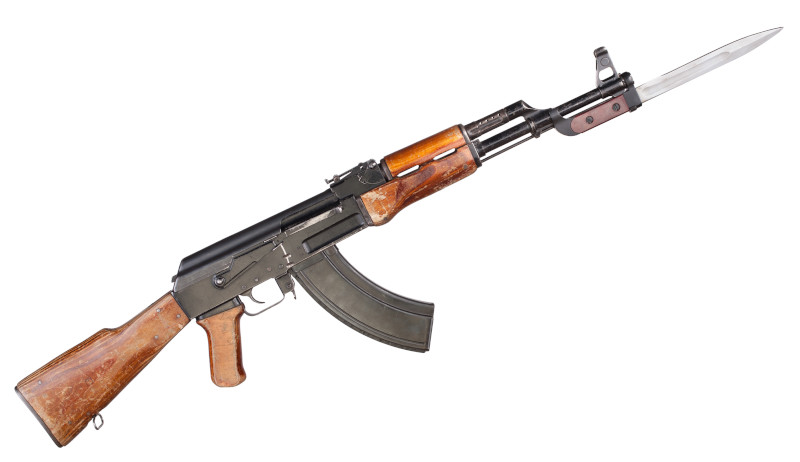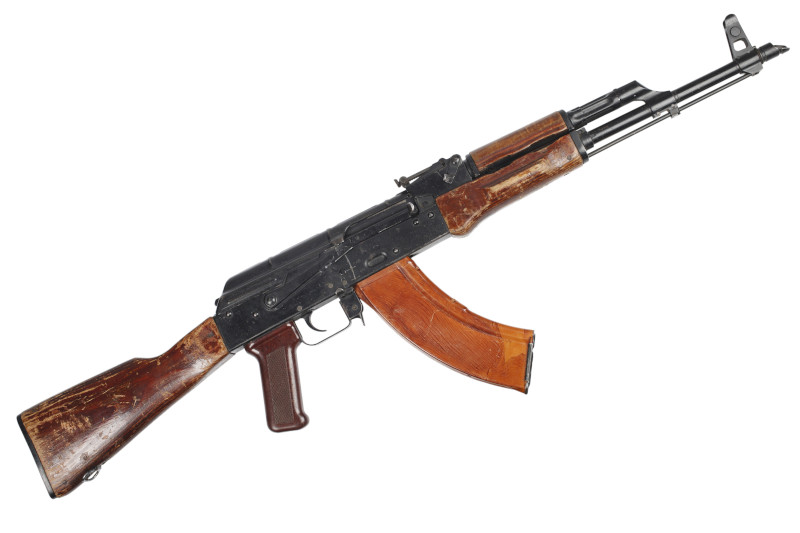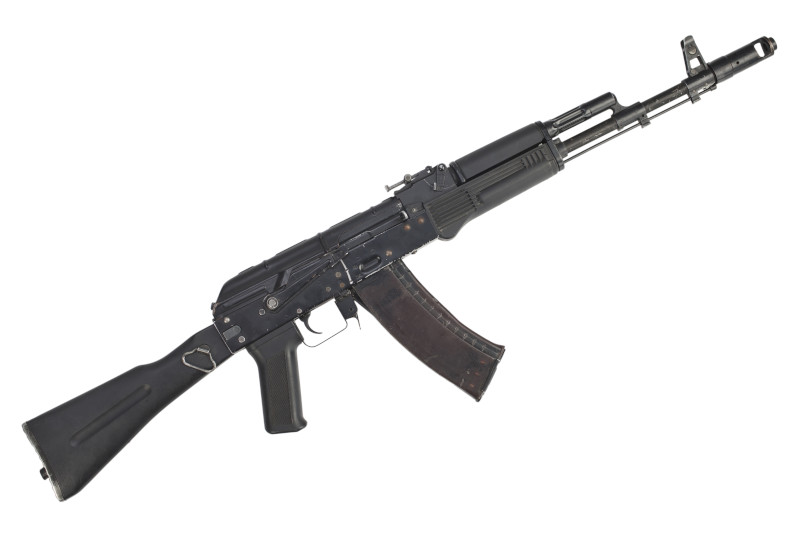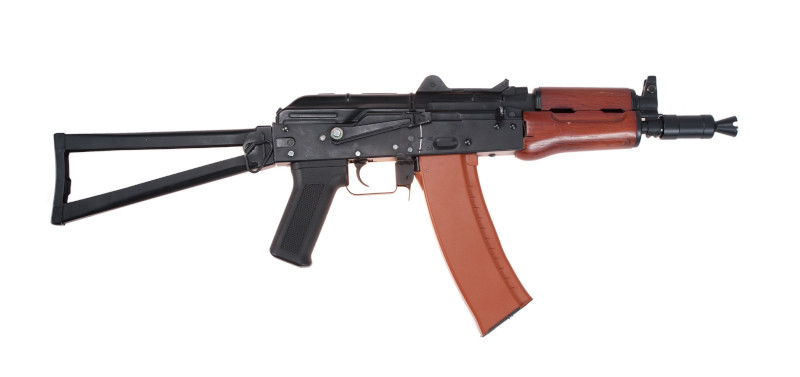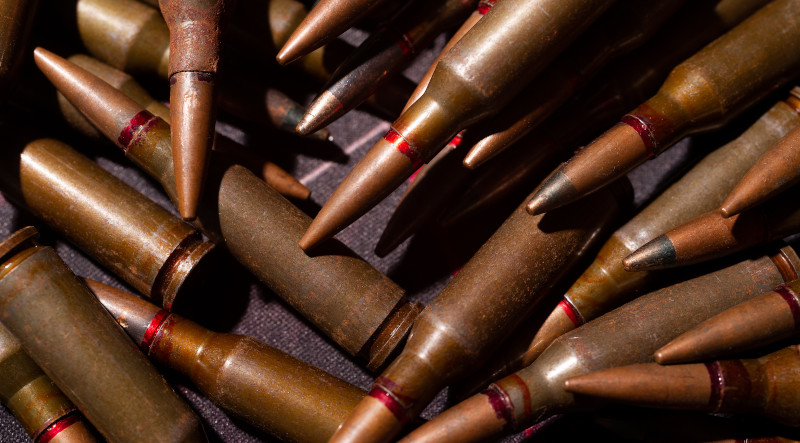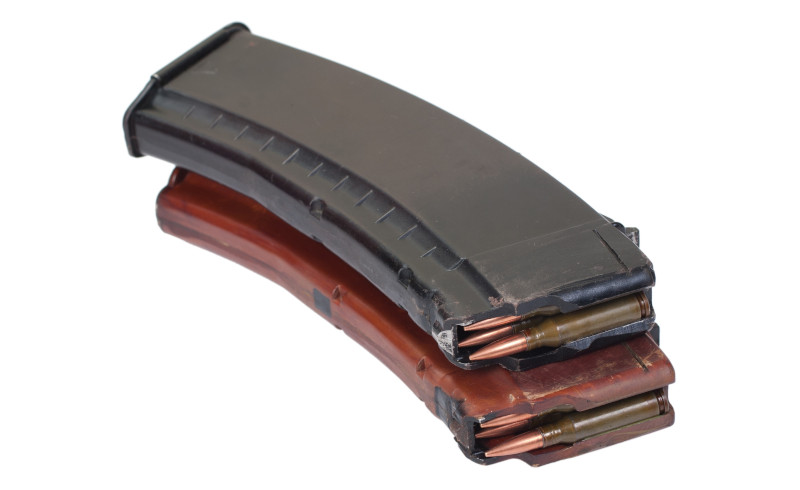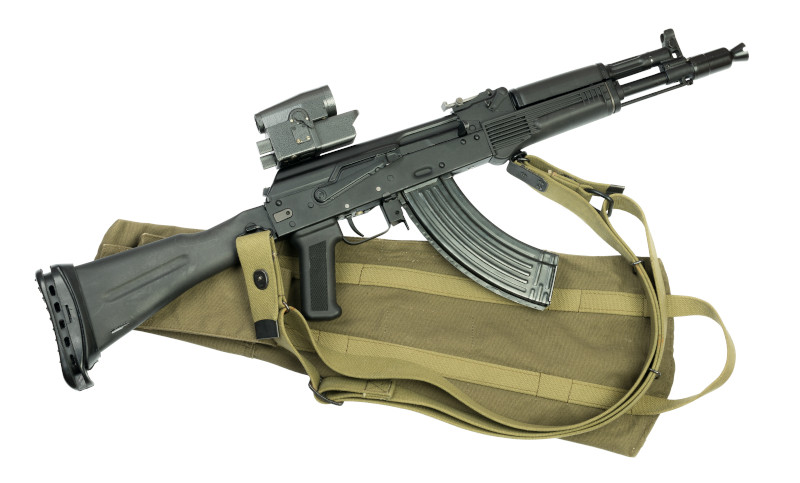The past few months have seen a surge of gun sales, with June setting a new record. Many of those purchasing guns are first-time gun owners, who may not be familiar with the way their firearms operate. There’s nothing wrong with that, as many of us were once in that same situation. But now that you’re a gun owner, you need to learn everything you can about the tool you now own.
While AR-15s may have made up the majority of the new tactical rifles purchased recently, AK-pattern rifles remain popular. Their prices have risen significantly as supplies of surplus parts from Eastern Europe, the former Soviet Union, and the Middle East have dried up significantly, but they remain available.
Following in the footsteps of our advice to new AR-15 owners, we’re going to dive into the workings of AK-style rifles. So if you’re a new AK owner, here are some useful tips.
1. Learn About Your AK
While the AR-15 platform has become highly modular, so that many parts and accessories will interchange among many different rifles, the same can’t be said of the AK. Due to upgrades throughout its history, there are numerous variants and sub-variants. Not knowing what you have can mean buying the wrong parts and accessories, wasting your time and effort. Here are the major types of AK rifles that are out there and what differentiates them from the others.
a. AK-47 Pattern Rifles (Milled AK)
The original AK-47, known as the Type I, featured a stamped receiver, with trunnion parts riveted to the receiver. Poor stamping technology at the time led to the Type I being replaced very quickly by the Type II and eventually the Type III AK-47 rifles. These rifles featured milled receivers, and most milled receiver AK rifles you’ll see in the US are based on the Type III.
You’ll often see parts and accessories for these rifles referred to as “Milled AK” parts and accessories. The method of stock attachment differs from later AK models, and the handguards, while normally interchangeable, are slightly different in their configuration. Milled AK rifles also feature a thicker barrel, so barrel components such as gas blocks, front sight blocks, etc. have wider dimensions to fit these thicker barrels and will not fit later AKM-style rifles.
b. AKM Pattern Rifles (Stamped AK)
Advances in stamping technology resulted in the modified AK, i.e. AKM, being introduced in the late 1950s. The overwhelming majority of AK-type rifles in the US today are of the AKM pattern, and are commonly referred to as stamped AKs. The barrel is slightly thinner than the milled AK rifles, and the stock attaches to the rear trunnion that is riveted to the receiver, rather than to an integral receiver tang like on the milled AK rifles. Most parts and accessories available on the market today are intended for stamped AK rifles.
c. Yugo AK Pattern Rifles
Yugoslavian AK rifles come with both stamped and milled receivers. Parts are normally interchangeable across Yugoslavian stamped and milled rifles, but many parts are not interchangeable with other stamped and milled AK rifles from other countries.
The Yugoslavian rifles used the thicker AK-pattern barrel, but with longer handguards and yet another different method of stock attachment. Accessories for these rifles are generally advertised as Yugo- or M70-pattern.
d. Chinese AK Rifles
Chinese AK rifles use a barrel with milled AK dimensions except at the chamber, which is significantly smaller than any other AK rifles. Examples of Chinese rifles are relatively rare in the US and are largely in the hands of collectors, due to the 1989 assault weapons import ban that cut off imports from China.
e. AK-74 Pattern Rifles
The Soviet Union adopted the AK-74 and its 5.45x39mm cartridge in 1974. By the time the Iron Curtain fell, only a few other countries had adopted rifles chambered in 5.45×39. Most AK-74 pattern rifles in the US will follow the Bulgarian pattern, as Bulgarian company Arsenal has imported thousands of rifles to the civilian market.
Other AK-74 parts available include those from Russia and East Germany. Poland’s 5.45x39mm rifle, the Tantal, shares some parts commonality with AK-74 pattern rifles. Romania’s AIMS-74 rifle does as well, although its bolt, bolt carrier, and trunnion differ from other AK-74 pattern rifles. North Korea also adopted an AK-74 rifle, although those parts are scarcer than hen’s teeth.
f. Others
There are numerous other AK and AK-type rifles that are too numerous to list. Those include the Krinkov-type short-barreled rifles, including the Yugoslavian M92-type rifles, civilian Draco rifles and pistols, 5.56×45-chambered AK-74 pattern rifles, the Yugoslavian M76 and Romanian PSL marksman rifles, and others.
2. Train
The most important thing to do once you’ve acquired your rifle is to train with it. Any gun you trust for self defense should have a minimum of 500 rounds through it before you trust it with your life. That’s especially true for AK rifles as, despite the platform’s reputation for reliability, the number of guns built in the US from parts kits and the number of cheap Romanian rifles imported means that there are many AK rifles out there that have problems operating reliably. It’s better to find that out on the range rather than during a life or death situation.
Even if you aren’t able to get live training, practicing dry firing or watching videos can be immensely helpful. Look to experienced experts like Larry Vickers or Rob Ski at AK Operators Union for more information on how to run your AK.
3. Stock Up on Ammunition
With the recent run on ammunition, most ammo in commonly available calibers is in short supply. But that’s not the case for 7.62x39mm and 5.45x39mm, for which ammo is still easily available and found at cheap prices. It may not be the sub-20 cent per round prices that we saw last year, but 25 cents a round is the going rate right now for steel-cased ammunition in both calibers.
Handloading for these calibers doesn’t make economic sense right now because the cost of components far exceeds the cost of factory ammunition. But if you have the need for more accurate ammo, or if you want to protect yourself against the possibility that this ammunition will be banned from import (since much of it comes from Russia), setting yourself up to handload isn’t a bad idea. That’s especially true in the case of 5.45×39, which is essentially solely sourced from Russia, and for which brass cases just recently became available.
4. Buy Magazines
Once again, rifles are no good without a magazine. Unfortunately, the days of cheap $4 surplus magazines from Eastern Europe is long gone. Expect to pay $25-30 minimum for surplus magazines, with rarer examples commanding up to $60 or more. Magazines for the AK-74 are particularly expensive, as collector demand for everything 5.45 has increasing significantly in recent years.
There are other options available, such as Magpul and various other imported magazines. For 7.62x39mm rifles, new Yugoslavian commercial steel magazines are widely regarded as the best first choice. Magpul magazines are considered a second choice for 7.62×39, and a first choice for 5.45×39 just because there aren’t that many commercial options available.
Many commercial magazines have problems with ammunition feeding and can cause jams. They also very often lack metal reinforcement in three critical areas: the front lug, the rear locking lug, and the feed lips. Polymer magazines with no metal reinforcement very often develop cracks or shear off completely in those areas even with relatively light use, thus rendering the magazines inoperable. Make sure to test your magazines thoroughly in your rifle to ensure that you don’t have feeding issues.
5. Improve Optics
Because of the AK platform’s design, it doesn’t lend itself well to improving the optics. The dust cover is horribly loose on many rifles, making it a poor choice for optics mounting. There are some aftermarket options, such as Zenitco hardware, but those are difficult to find and quite expensive.
Optics improvement is almost a must with the AK, however, as the standard sights are inferior to the AR-15’s sights, and are difficult to shoot accurately at longer ranges, both because of their notch and post design and because of their short sight radius. But despite the AK’s long stroke gas piston and inherent inaccuracy in comparison to the AR-15, it is still capable of minute of man shooting out to several hundred meters, especially with optics. In order to mount optics, here are the most common options.
a. Gas Tube Optics Mount
Railed gas tubes such as the Ultimak allow shooters to mount a red dot sight forward of the rear sight. This replaces the stock gas tube and upper handguard, allows for a good sight picture with minimal obstruction, and gives a pretty firm zero. The major downside is the potential to fry the red dot sight under excessive firing as the gas tube heats up. Heat mirage is also a consideration.
b. Side Rail Mount
Traditionally, optics were mounted to the AK rifles through use of a side rail riveted to the receiver. A mount would be attached to the side rail that would extend over the top of the top cover, allowing the mounting of scopes or red dot sight above the receiver. There are numerous different models of rails and mounts available on the market today.
If your AK came with a rail, you’re in luck and can mount your choice of optics mount. Otherwise you’ll probably need a gunsmith to install the right type of rail for your rifle.
You’ll want to do your research when it comes to side mounts, as not all of them are created equal. Some won’t mount your optic directly over the receiver’s center line, with the optic often being offset to the left. That can result in issues when shooting at longer ranges.
c. Top Rail
A newer method of mounting optics to the AK is a Beryl-style or dogleg-style top rail. These normally attach at two points, one at the rear sight and one where the stock screw attaches to the rear trunnion. They offer a long railed surface, repeatable zero, and some offer a quick detach feature so that the rear cover can be removed for cleaning without having to unscrew the rear screw attaching the rail.
d. Rear Sight Mount
Finally, some newer optics mounts replace the rear sight completely, allowing a red dot or prism sight to be mounted where the rear sight normally is. This offers a beneficial sight forward picture while still allowing for easy removal of the gas tube and rear cover. Some mounts even offer a rudimentary notch so that in a pinch you still have both a front and rear sight for short-range shooting.
6. Think About Ergonomics
Ergonomic upgrades to the AK are similar to those of the AR-15, and are generally designed to make the AK easier to handle. With the charging handle being permanently attached to the bolt carrier and on the right side of the rifle, operating the AK is far different than operating the AR. That extends to manipulation of the safety, reloading, etc. Here are a few common options that can help upgrade your AK.
a. Stocks
Even Russian forces have moved to collapsible stocks on their AK pattern rifles. Whether fixed or folding, collapsible stocks allow length of pull adjustment to make sure anyone can shoot the gun no matter how short their arms, how much winter clothing they’re wearing, or whether or not they’re wearing body armor.
Most common on the market today are AR-15 buffer tube adapters, which allow shooters to place an AR-15 buffer tube onto their AK. That allows the use of all commonly available AR-15/M4 collapsible buttstocks.
b. Pistol Grips
The standard AK pistol can be comfortable to some shooters, but others may want something a little different. Whether it’s a thicker grip, one with thumb grooves, or one with storage options, there’s something out there for everyone.
c. Handguards
Railed and M-LOK handguards have made their way to the AK platform too. They allow for the mounting of vertical foregrips, weapon lights, IR lasers/lights, etc. Handguards made to fit the standard AK handguard size have limited capability for mounting things, but there are extended handguards available for those needing to mount something forward of the handguard retainer or gas block.
d. Safety
US manufacturers have come up with numerous types of improved safety levers for the AK. Some have notches in the top to allow the bolt to be held back after a magazine has been emptied, in conjunction with Yugoslavian AK magazines or others that have a follower that keeps the bolt open when the magazine is empty. The downside to that notch is that it will allow dust into the right side of the action.
Other improved safeties feature larger surfaces to allow for easier one-handed operation of the safety/selector lever with the shooting hand, allowing for more efficient operation of the rifle.
e. Paddle Magazine Release
The standard AK magazine release is small and can be difficult to operate with the hand. While some instructors teach reloading using the next full magazine to operate the magazine release, that risks damaging the new magazine. The large paddle release offers a larger surface to press against, allowing for easier manipulation with either the hands or a fresh magazine.
7. Other Upgrades
a. Flash Hiders and Muzzle Brakes
There are probably more flash hiders and muzzle brakes developed for the AK than for any other rifle out there. From the standard 14x1mm LH slant brakes and 24×1.5mm RH AK-74 brakes to flash hiders and devices for all the other odd AK muzzle threads out there, there’s something for everyone. Whether you’re looking for something that looks cool, something that makes a huge fireball, or something that fully suppresses muzzle flash, you’ll be able to find a muzzle device that fits your needs.
b. Trigger
The quality of AK triggers can often be lacking, particularly when it comes to trigger slap. Thankfully, because AK triggers are often replaced with US parts to achieve or maintain 922(r) compliance, there are numerous options available to shooters looking for better trigger feel on their AK rifles.
c. FCG Pin Retaining Plate
AK fire control group (FCG) pins have a tendency to walk out if they’re not held in place. Traditionally that was done with the thin wire shepherd’s hook that wrapped around the selector lever, hammer pin, and trigger pin. It can be difficult to get the shepherd’s hook to align with the pins, so many US manufacturers have come up with a plate-style retainer that allows for much easier installation and reinstallation of the FCG pins while keeping them more securely retained.
As with our guide to the AR-15, we’ve barely scratched the surface of what there is to know about the AK-47 and AKM platform. But if you’re a new AK owner and wondering what to do with your new acquisition, hopefully this will help get you started and familiarized with this very effective weapons system.
